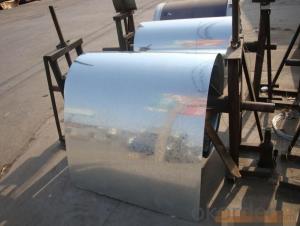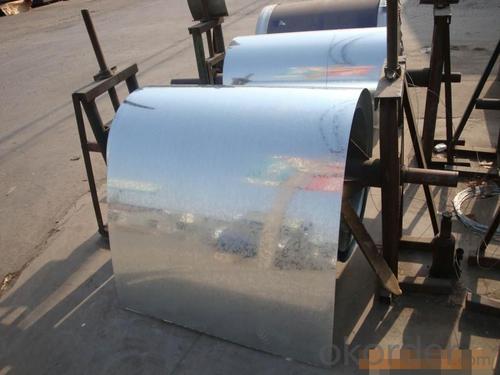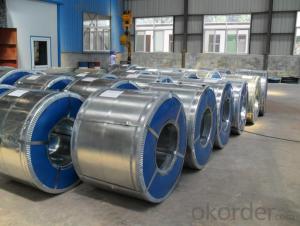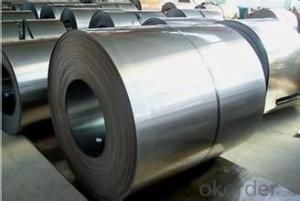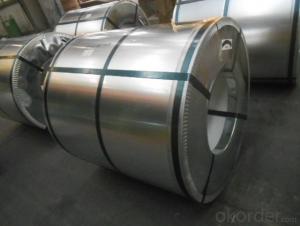Hot Dipped Galvanized Steel Coil----the Largest Producer in China
- Loading Port:
- Shanghai
- Payment Terms:
- TT OR LC
- Min Order Qty:
- 2500 PCS
- Supply Capability:
- 250000 PCS/month
OKorder Service Pledge
OKorder Financial Service
You Might Also Like
Product Description
1.Product Name:Hot dipped galvanized steel coil
2.Hot dipped galvanized steel coil Thickness:0.1mm-2mm
3.Hot dipped galvanized steel coil Width:600mm-1250mm
4.Hot dipped galvanized steel coil Zinc coated:40g-275g
5.Hot dipped galvanized steel coil MOQ:25 tons
Galvanized steel coil features:
Zinc coating :60-220g/m2( as required)
Thickness:0.13-3.0mm
Width:600-1250mm(900mm,1215mm,1250mm,1000mm the most common)
Coil id:508mm
Coil weight: 3-5MT(as required)
Surface:regular/mini/zero spangle, chromated, skin pass, dry etc.
Hot dipped galvanized steel coil Application:
With excellent cold bending molded manufacturablity, good decoration effect, strong anti-corrosion ability, galvanized steel coils and sheets are also pollution-free and easily recycled. Accordingly, they can be used as final products and basic plates of color coated steel coils and widely applied in construction, home appliances, decoration, ect.
Packaging & Delivery
Packaging Detail: export standard: plastic film +water proof paper + steel plate+ packing steel strip
Delivery Detail: about 25 days after a firm order
Product Picture
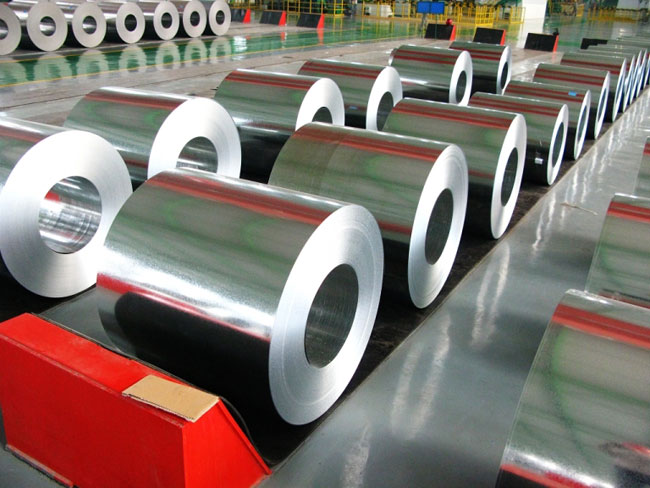
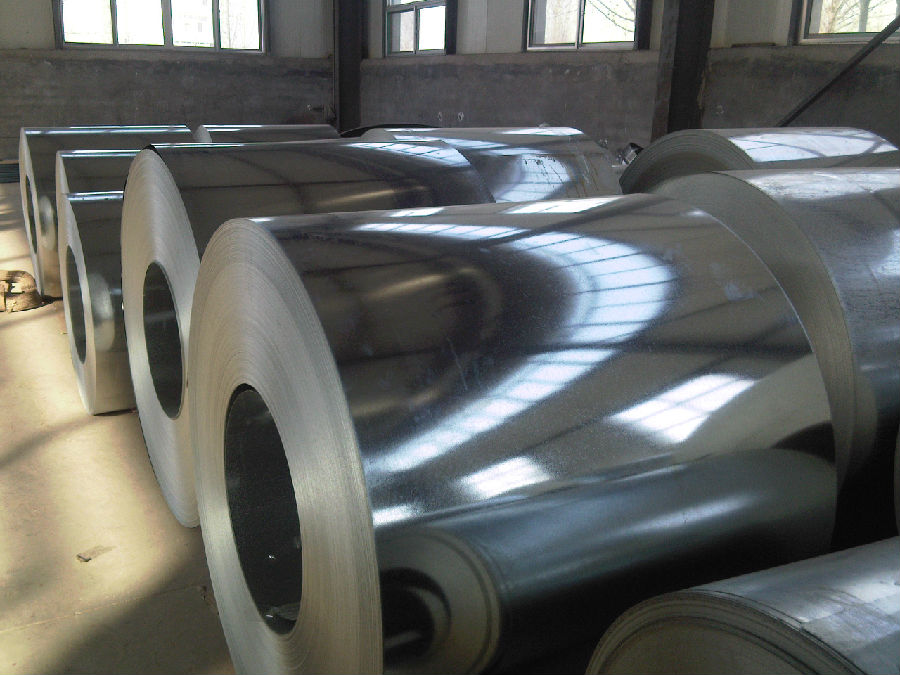
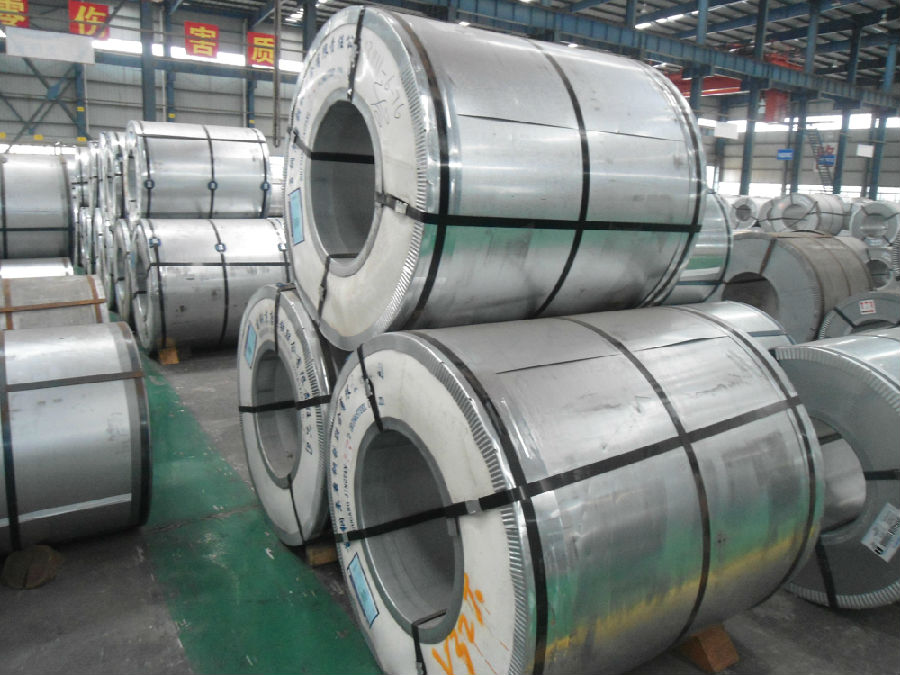

- Q: How do steel coils contribute to sustainable construction?
- Steel coils contribute to sustainable construction in several ways. Firstly, steel is a highly durable material that can withstand extreme weather conditions and resist corrosion, leading to longer-lasting structures. This durability reduces the need for frequent repairs and replacements, thereby reducing waste and conserving resources. Secondly, steel is a recyclable material, meaning that at the end of a building's life cycle, the steel used in its construction can be easily and efficiently recycled. This reduces the demand for new steel production, which is energy-intensive and releases greenhouse gases. By using steel coils made from recycled steel, the construction industry can significantly reduce its environmental impact. Additionally, steel coils are versatile and can be shaped and formed into various structural components, allowing for efficient use of materials and minimizing waste. The lightweight nature of steel coils also makes transportation and handling more cost-effective and environmentally friendly. Furthermore, using steel coils in construction can contribute to energy efficiency. Steel has excellent thermal conductivity, which means it can effectively transfer and distribute heat, enabling better insulation and reducing energy consumption for heating and cooling. Overall, steel coils play a vital role in sustainable construction by promoting durability, recyclability, efficient material usage, and energy efficiency.
- Q: What are the common coil thickness and width combinations available for steel coils?
- The specific requirements and standards of the industry can cause the available combinations for steel coil thickness and width to vary. Nonetheless, there are commonly used combinations that can be found. There is a range of options for coil thickness, varying from thin to thick coils. Thin coils typically have a thickness of 0.4mm to 3.0mm, while medium thickness coils can be around 3.0mm to 6.0mm. Thicker coils can range from 6.0mm to 25.0mm or even higher, depending on the specific application. The coil width also varies depending on the intended usage. Common options include widths of 600mm, 750mm, 900mm, 1000mm, 1200mm, 1250mm, and 1500mm. However, wider or narrower coils can also be available depending on the specific requirements of the customer or industry. Ultimately, the most suitable combination of coil thickness and width will depend on factors such as the intended application, manufacturing processes, transportation limitations, and customer preferences. It is crucial to consult with steel coil manufacturers or suppliers to determine the most appropriate options for your specific needs.
- Q: full discription about hydrolics used in steel melting shop with hyd valve is use in thair circit too ?
- The correct spelling is hydraulics. I haven't heard the term steel melting shop you probably means a foundry or a steel mill The most obvious example i can think of is hydraulic-operated fork lifts. Hydraulic cylinders are used to lift the forks and to tilt them upwards or downwards. The valves are coneccted to levers next to the steering wheel. Hydraulic pressure is supplied by a hydraulic pump driven by a propane or diesel engine. In some forklift designs the wheels are also not connected directly to the engine, but driven by hydraulic motors. There are also a large variety of machines used in steel mills and metalworking companies to cut and shape metal parts. for example, press brakes, plate cutting shears, stamping presses, hole punch machines, drawing presses, etc. These types all operate in much the same basic way. They use a very large cylinder or group of cylinders to apply many tons of force to different kinds of metal working tools.
- Q: What are the different methods of laminating steel coils?
- There are several different methods of laminating steel coils, each with its own advantages and applications. The most common methods include hot rolling, cold rolling, and continuous annealing. Hot rolling is a process in which steel is heated above its recrystallization temperature and then passed through a series of rollers to produce thin sheets or coils. This method is commonly used for producing large quantities of steel with a consistent thickness and surface finish. Hot rolled steel coils are often used in structural applications, such as construction and automotive manufacturing. Cold rolling, on the other hand, involves passing the steel coil through a series of rollers at room temperature. This process not only reduces the thickness of the steel but also improves its surface finish and mechanical properties. Cold rolled steel coils are typically used in industries that require high precision and quality, such as appliance manufacturing, electrical equipment, and automotive components. Continuous annealing is another method of laminating steel coils. It involves heating the steel coil to a specific temperature and then slowly cooling it in a controlled environment. This process helps to relieve internal stresses and improve the steel's mechanical properties, such as strength and ductility. Continuous annealing is often used for producing high-quality steel coils for applications that require superior surface finish and formability, such as automotive body panels and household appliances. Other less common methods of laminating steel coils include electro-galvanizing, which involves coating the steel with a layer of zinc through an electroplating process, and hot-dip galvanizing, where the steel coil is dipped into a bath of molten zinc. These methods are primarily used for corrosion protection and are commonly seen in the construction industry, particularly for outdoor structures and infrastructure. In summary, the different methods of laminating steel coils include hot rolling, cold rolling, continuous annealing, electro-galvanizing, and hot-dip galvanizing. Each method offers distinct benefits and is chosen based on the specific requirements of the application.
- Q: My boyfriend says he has balls of steel.
- Easy to test. Put a magnet near them. If they attract, then they're made of steel. I'd be willing to bet I'd know what will happen, though! I know you can get metal hip replacements but .........
- Q: How are steel coils inspected for formability?
- Steel coils are inspected for formability through a combination of visual inspection, physical testing, and advanced technologies such as laser scanning and digital image correlation. These methods assess the coil's surface condition, dimensional accuracy, and mechanical properties to ensure it meets the required standards for various forming processes.
- Q: tinplate,hot rolled coil,hot rolled sheet,cold rolled coil,cold rolled sheet,d bar,wire rod,triangle,structural steel,steel pipe,steel tube,carbon steel pipe
- Here are the top 30 steel producing companies in the world, listed by the megaton output: 1. 63.0 Mton Mittal Steel Company NV (Global) [2] 2. 46.7 Mton Arcelor (Europe) [3] 3. 32.0 Mton Nippon Steel (Japan) [4] 4. 30.5 Mton POSCO (South Korea) [5] 5. 29.9 Mton JFE (Japan) [6] 6. 23.8 Mton Shanghai Baosteel Group Corporation (China) 7. 19.3 Mton United States Steel Corporation (United States) 8. 18.4 Mton Nucor Corporation (United States) 9. 18.2 Mton Corus Group (Europe) [7] 10. 17.5 Mton Riva Group (Europe) [8] 11. 16.5 Mton ThyssenKrupp (Europe) [9] 12. 16.1 Mton Tangshan (China) 13. 13.9 Mton EvrazHolding (Russia) 14. 13.7 Mton Gerdau (Brazil) 15. 13.6 Mton Severstal (Russia) 16. 13.5 Mton Sumitomo Metal Industries (Japan) 17. 13.4 Mton SAIL (India) 18. 12.0 Mton Wuhan Iron and Steel (China) 19. 11.9 Mton Anshan (China) 20. 11.4 Mton Magnitogorsk (Russia) 21. 10.5 Mton Jiangsu Shagang (China) 22. 10.5 Mton Shougang (China) 23. 10.4 Mton Jinan (China) 24. 10.3 Mton Laiwu (China) 25. 10.3 Mton China Steel (Taiwan) [10] 26. 9.6 Mton Maanshan 27. 9.4 Mton Imidro 28. 8.7 Mton Techint 29. 8.7 Mton Usiminas (Brazil) 30. 8.5 Mton Novolipetsk (Russia)
- Q: Perform three sets of 15 repetitions several times a week and you will soon have buns of steel.
- Bunz Of Steel
- Q: What are the different methods of coil edge trimming?
- There are several methods of coil edge trimming that are commonly used in various industries. These methods include: 1. Shearing: This method involves using a shear blade to cut the edges of the coil. Shearing is a common method used for cutting thick coils and can be done manually or with the help of a machine. It provides a clean and straight cut but may not be suitable for thin or delicate materials. 2. Slitting: Slitting is a process in which the coil is passed through slitter knives that make multiple cuts along the edge to create narrower strips. This method is commonly used for producing narrow coils or strips of various widths. Slitting can be done in-line with a coil processing line or as a separate standalone process. 3. Laser cutting: Laser cutting is a precise method of coil edge trimming that uses a high-powered laser beam to cut through the material. It offers high accuracy and flexibility to cut complex shapes or patterns. Laser cutting is commonly used for thin or delicate materials, as it minimizes the risk of deformation or damage caused by other cutting methods. 4. Plasma cutting: Plasma cutting is a thermal cutting process that uses a plasma torch to cut through the coil. It is suitable for cutting a wide range of materials, including thick coils. Plasma cutting is known for its high cutting speed and ability to cut through materials with high melting points, such as stainless steel or aluminum. 5. Waterjet cutting: Waterjet cutting is a method that uses a high-pressure jet of water mixed with an abrasive material to cut through the coil. It is a versatile method that can cut a wide range of materials and thicknesses. Waterjet cutting provides a smooth and precise cut without heat-affected zones, making it suitable for sensitive materials. 6. Guillotine cutting: Guillotine cutting involves using a guillotine-style blade to cut through the coil. It is a quick and efficient method that provides a straight cut. Guillotine cutting is commonly used for cutting coils of various thicknesses and is often performed with the help of a machine for higher precision. Each method of coil edge trimming has its own advantages and considerations depending on the specific requirements of the application. The choice of method usually depends on factors such as material properties, thickness, desired cutting accuracy, production volume, and budget constraints.
- Q: What are the common methods of welding steel coils?
- The common methods of welding steel coils include arc welding, resistance welding, and laser welding.
Send your message to us
Hot Dipped Galvanized Steel Coil----the Largest Producer in China
- Loading Port:
- Shanghai
- Payment Terms:
- TT OR LC
- Min Order Qty:
- 2500 PCS
- Supply Capability:
- 250000 PCS/month
OKorder Service Pledge
OKorder Financial Service
Similar products
Hot products
Hot Searches
Related keywords
